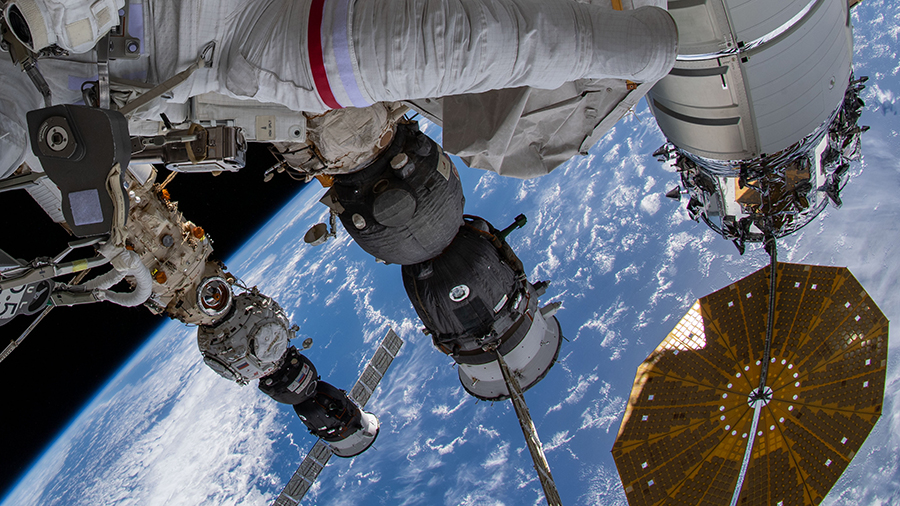
NASA Television coverage of NASA astronaut Mark Vande Hei and two Roscosmos cosmonauts’ end of mission aboard the International Space Station and return to Earth is underway.
At 3:21 a.m. EDT, Vande Hei, along with Anton Shkaplerov and Pyotr Dubrov, will close the hatch to the Soyuz MS-19 spacecraft to begin the journey back to Earth. The Soyuz will undock from the Rassvet module, heading for a parachute-assisted landing Wednesday, March 30, on the steppe of Kazakhstan, southeast of the remote town of Dzhezkazgan.
Coverage of the crew’s undocking and landing will air live on NASA TV, the agency’s website, and the NASA app at the following times (all EDT):
- 2:45 a.m. Wednesday, March 30 – Undocking (at 3:21 a.m.)
- 6:15 a.m. Wednesday, March 30 – Deorbit burn and landing (landing at 7:28 a.m. / 5:28 p.m. Kazakhstan time)
NASA astronaut Mark Vande Hei arrived at the International Space Station on April 9, 2021, spending 355 days in low-Earth orbit, breaking the previous record held by retired NASA astronaut Scott Kelly by 15 days.
While clocking the single longest spaceflight by a NASA astronaut, Vande Hei contributed to dozens of studies from the hundreds executed during his mission, including six science investigations supported by NASA’s Human Research Program, or HRP.
For one investigation, Vande Hei helped grow and evaluate vegetables harvested with the space station’s Vegetable Production System, or Veggie. The investigation seeks to develop a food production system that can help astronauts meet their dietary needs with fresh vegetables cultivated in space.
Vande Hei also provided biological samples for an investigation that collects a core set of measurements, called Spaceflight Standard Measures. The investigation seeks to characterize “normal” changes in the human body during spaceflight. For instance, wrist-worn sensors that measure activity levels and light exposure can help researchers better understand the sleep-wake cycle of astronauts. Blood and saliva samples collected by crew members throughout their mission can also help scientists assess changes in various hormones, proteins, and cells that reveal how the immune system changes in space.
In addition, he contributed to a separate investigation collecting biological samples from the crew aboard the space station and placing them in a storage bank. Researchers can draw upon the samples to study spaceflight-induced changes in human physiology.
At the time of undocking, Expedition 67 will formally begin aboard the station, with new station Commander Tom Marshburn, NASA astronauts Raja Chari and Kayla Barron, ESA (European Space Agency) astronaut Matthias Maurer, and Roscosmos cosmonauts Oleg Artemyev, Denis Matveev, and Sergey Korsakov.
After landing, the Soyuz MS-19 crew will split up, as per standard crew return practice, with Vande Hei returning to his home in Houston, while the cosmonauts fly back to their training base in Star City, Russia.
Learn more about station activities by following the space station blog, @space_station and @ISS_Research on Twitter, as well as the ISS Facebook and ISS Instagram accounts.
Get weekly video highlights at: http://jscfeatures.jsc.nasa.gov/videoupdate/
Get the latest from NASA delivered every week. Subscribe here: www.nasa.gov/subscribe
